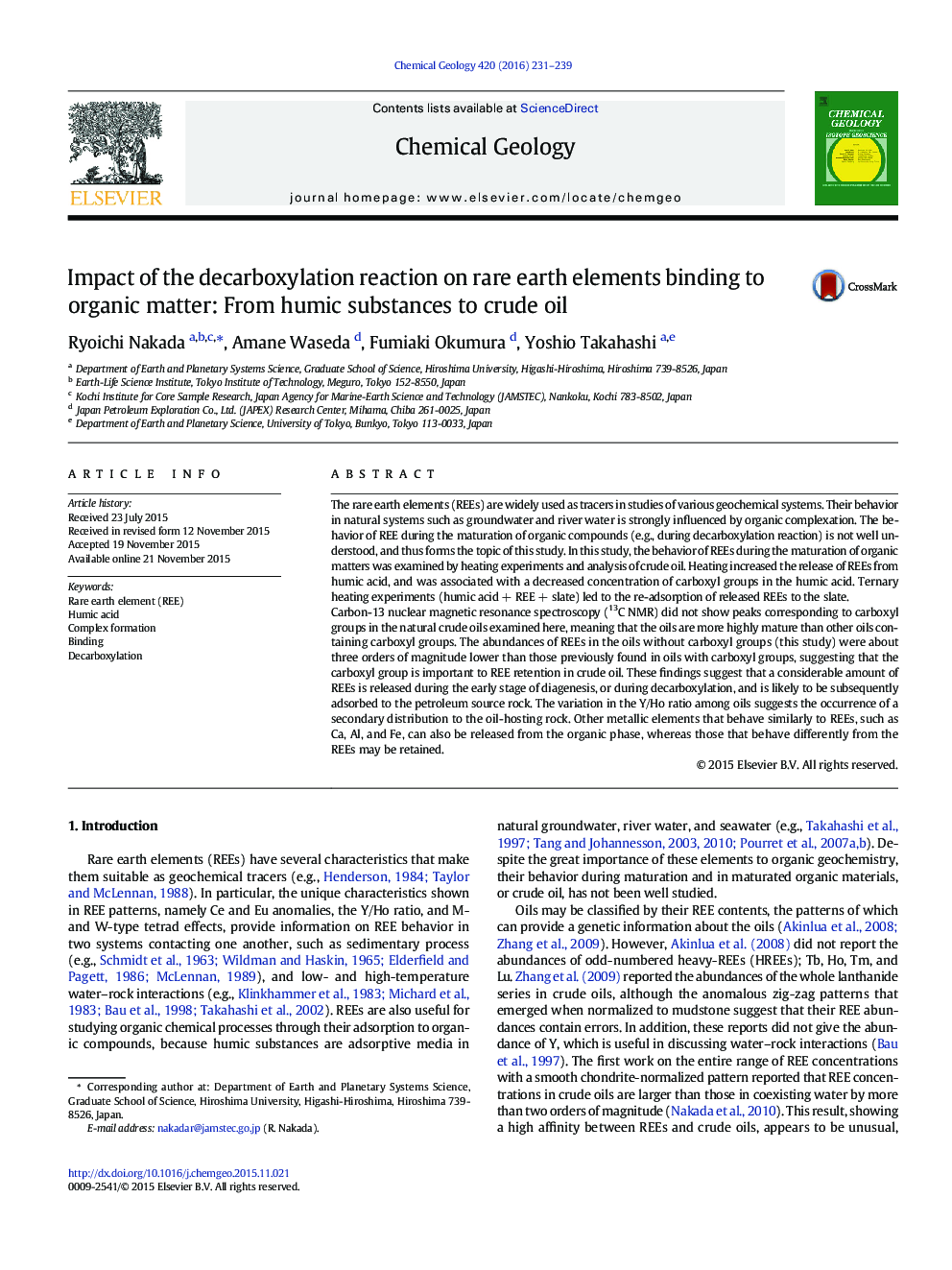| کد مقاله | کد نشریه | سال انتشار | مقاله انگلیسی | نسخه تمام متن |
|---|---|---|---|---|
| 4698363 | 1637554 | 2016 | 9 صفحه PDF | دانلود رایگان |
• REE behavior during maturation process was examined.
• REEs were released from humic acid with decreasing amount of carboxyl group.
• The released REEs were re-distributed to minerals.
• REE abundance in oils without carboxyl group was 3 orders of magnitude lower than those with carboxyl group.
• This study brings new possibilities regarding the interdisciplinary research in organic and inorganic geochemistry.
The rare earth elements (REEs) are widely used as tracers in studies of various geochemical systems. Their behavior in natural systems such as groundwater and river water is strongly influenced by organic complexation. The behavior of REE during the maturation of organic compounds (e.g., during decarboxylation reaction) is not well understood, and thus forms the topic of this study. In this study, the behavior of REEs during the maturation of organic matters was examined by heating experiments and analysis of crude oil. Heating increased the release of REEs from humic acid, and was associated with a decreased concentration of carboxyl groups in the humic acid. Ternary heating experiments (humic acid + REE + slate) led to the re-adsorption of released REEs to the slate.Carbon-13 nuclear magnetic resonance spectroscopy (13C NMR) did not show peaks corresponding to carboxyl groups in the natural crude oils examined here, meaning that the oils are more highly mature than other oils containing carboxyl groups. The abundances of REEs in the oils without carboxyl groups (this study) were about three orders of magnitude lower than those previously found in oils with carboxyl groups, suggesting that the carboxyl group is important to REE retention in crude oil. These findings suggest that a considerable amount of REEs is released during the early stage of diagenesis, or during decarboxylation, and is likely to be subsequently adsorbed to the petroleum source rock. The variation in the Y/Ho ratio among oils suggests the occurrence of a secondary distribution to the oil-hosting rock. Other metallic elements that behave similarly to REEs, such as Ca, Al, and Fe, can also be released from the organic phase, whereas those that behave differently from the REEs may be retained.
Journal: Chemical Geology - Volume 420, 20 January 2016, Pages 231–239
